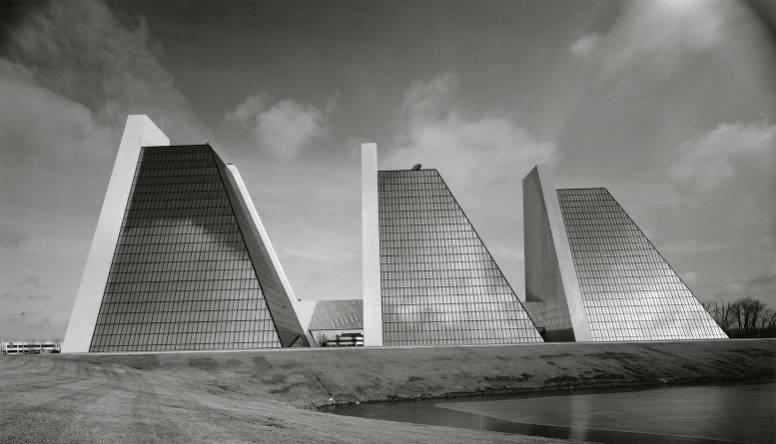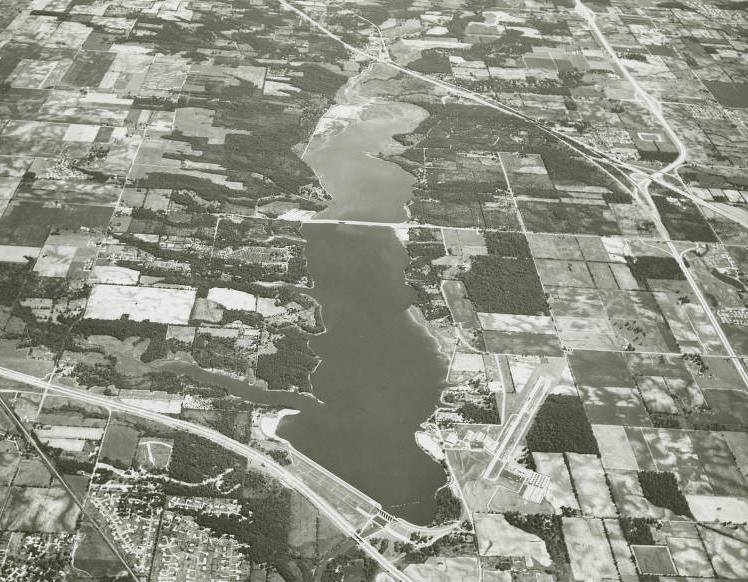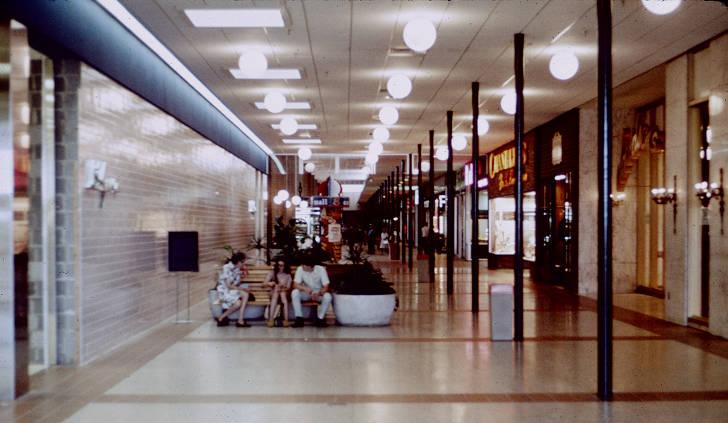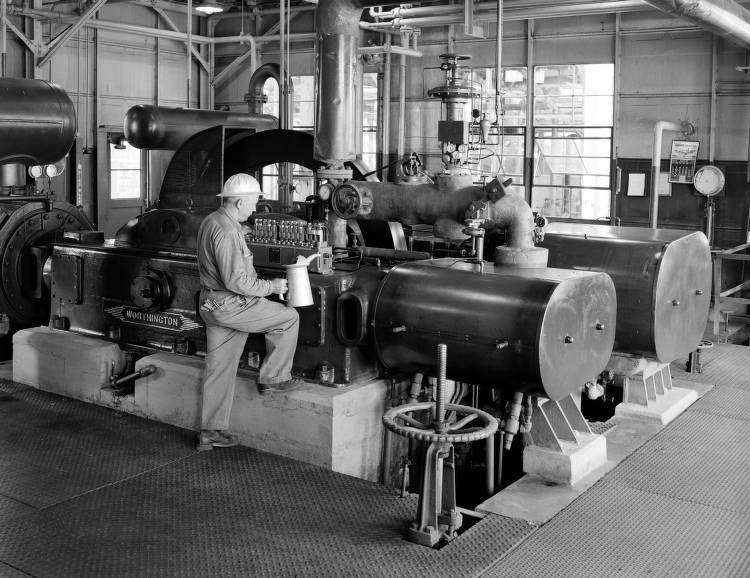Pike Township is located in the northwestern portion of Marion County. The Pike Township area was a favorite hunting ground of various Indian tribes through the early 1800s. It was a part of the area held by the powerful Miami Indian Confederacy. The 1818 Treaty of St. Mary’s, in which the Miami relinguished their lands, reserved their right to occupy the region until 1821, and some continued to trap and fish in the surrounding streams as late as 1824. Named for General Zebulon Pike, a hero of the War of 1812, Pike Township was organized in 1822.

Settlers trickled into the area in the 1820s. The first white man to purchase (or patent) land in the area was , who served on the state capital’s site-selection committee and would later settle . In 1823, the same year he completed the first brick home in Hamilton County, Conner selected an 80-acre parcel in Pike Township bisected by Eagle Creek and an Indian trail that would become Lafayette Road (1831), the first toll road in the county. Within the 80 acres would later be born the village of (1834) which was removed by the city of Indianapolis in the 1960s during the construction of Interstate 65 and Eagle Creek Reservoir. The village of Traders Point was officially platted and named in 1864.
James Harman is credited with being the first white man to settle in Pike Township. A veteran of the War of 1812, Harman came to the north part of the township in 1820 and settled on the east side of Eagle Creek. David McCurdy, Sr. was the second white settler in the township. On advice from the Indians at Broad Ripple, he came to Eagle Creek in search of arable farmland and good water. He eventually acquired 2580 acres along the creek between Clermont and Zionsville.
The second road through the township was (1832). George Coble Sr. and Jonathon Ingo founded , the first community along Michigan Road between West 71st Street and West 79th Streets. The Boardman house established in 1834 at 7718 Michigan Road is the most notable remnant of Augusta. These settlements were eclipsed by , platted in 1852 by Pike Township resident William Hornaday after the Indianapolis and Lafayette Railroad opened a route with a stop in the new settlement. Originally platted as Hosbrook, the name changed to New Augusta in 1876 after the post office incurred numerous postal mishaps resulting from another town already named Hosbrook in the state. The oldest part of New Augusta was adjacent to the railroad track. Seventeen businesses were located here including six general stores, two blacksmiths, three physicians, a flour/grain mill, a sawmill/lumber company, two carpenters, an apothecary, and a wagon maker.
Throughout the 19th and early 20th centuries, Pike Township was largely undeveloped. The 1900 census counted 2,000 residents; in 1950 there were 3,400. In the 1960s, however, several improvements opened the township to intensive development. A bridge spanning White River at 38th Street was completed in 1962 and, within a few years construction of I-465 and I-65, provided access to all parts of the city. A sewer construction project in 1969 and the completion of Eagle Creek Reservoir also spurred commercial and residential development.

, in the township’s northwest corner, provides a 5,000-acre nature facility for hiking, fishing, sailing, and skiing. It also includes a 27-hole golf course, bird sanctuary, archery range, woodland/wildlife preserve, and other family activities.
According to the U.S. Census Bureau, from 1960 and 1970, the population increased 125 percent to 15,000 residents. And from 1970 to 2000, Pike Township grew 377.4 percent, compared to a total gain among the nine townships in Marion County of 8.4 percent. The township has continued to grow.

The district is comprised of an early learning center, nine elementary schools, three middle schools, and an independent Freshman Center at Pike High School. The Pike Preparatory Academy serves middle school scholars in need of additional support in the areas of behavior and/or academics, and high school students who benefit from an alternative learning environment. The Pike Performing Arts Center, located on the Pike High School campus, is a state-of-the-art facility that seats 1,500 in the auditorium and 150 in the studio theater. Marian University also is in the township.
In addition to residential development, sprawling commercial complexes emerged along West 86th Street and Zionsville Road. The Park 100 commercial and industrial park, begun in 1974, expanded to cover 1,800 acres by 1990. In the same area, two additional office parks were constructed in the early 1990s. The Dow Park 100, one of the country’s largest industrial, technological, and office complexes is located at the 71st Street Technology Corridor. Park 100 is home to several major companies including Escient, Langham, , Pearson, , and the Indianapolis Star Distribution Center.

A significant loss to Pike Township’s history landscape came with the closure of the in 1993. Built in 1941, the Koch family of Texas acquired the refinery in 1946 turning it into a major source of unbranded gasoline for the nation as well as a visual place marker in the township. At its peak, the refinery produced 50,000 barrels of gasoline distributed nationally to off-brand gasoline stations. Marathon Oil purchased the refinery in 1989 yet closed the facility in 1993 unwilling to bear the expense of upgrading the refinery to meet the strict compliance codes of the 1990 Clean Air Act.
Another issue Pike Township has had to contend with since the 1990s has involved the once-bustling Lafayette Square Mall. In 1968 national mall developer Edward J. DeBartolo, Sr. built Lafayette Square Mall, the first enclosed shopping mall in greater Indianapolis. In the 1970s the sprawling mall featured nationally recognized six department stores including local favorite, . Indianapolis-based mall developer purchased the mall in 1996 and invested $18 million in improvements. However, by the time NY-based Ashkenazy Acquisition Corporation took ownership in 2006 the mall’s vacancy rate was nearly 20 percent. The mall has struggled amidst a changing neighborhood and a loss of traditional tenants over the years. By 2020, the former center of activity had two anchor stores, both discount retailers. Three other anchor-size spaces are vacant and smaller spaces are mostly occupied by a mix of local stores and restaurants with only a handful of national chains in the mix.
However, the creation of a around the area, and its 2004 designation as a Community Revitalization and Enhancement District and Opportunity Zone, sparked financial investment. What has emerged is the creation of the . Pike Township is home to families with diverse social, cultural, ethnic, and economic backgrounds. This dynamic comes to the fore in the area around Lafayette Square Mall where immigrants have created a unique cultural experience. The International Marketplace is a distinctive destination where more than 100 languages are spoken and 900 ethnic businesses from around the world are represented. In October 2019 the International Marketplace Coalition purchased a 56,000 square foot building north of Lafayette Square Mall to be developed as a Global Village Welcome Center.
Extensive development of office, retail, and commercial space continued through the 2000s. The Northwest Business Park is a 72-acre complex of warehouse, retail, and commercial space. College Park features the , three office buildings that have become a focal point of the area near Michigan Road and 86th Street. INTECH Park, Georgetown Square Business Park, 10 Fortune Park, and Creekside Corporation Park have spurred growth in Pike Township.

Is this your community?
Do you have photos or stories?
Contribute to this page by emailing us your suggestions.

